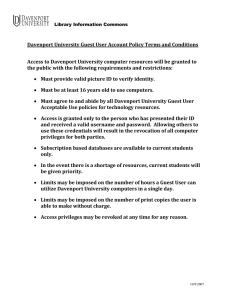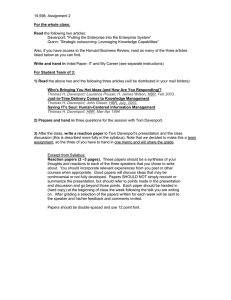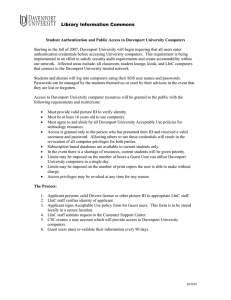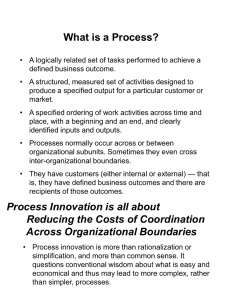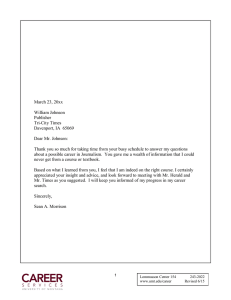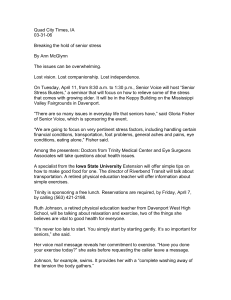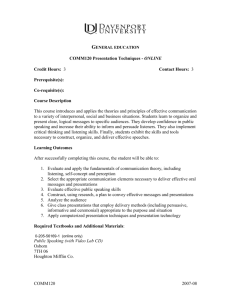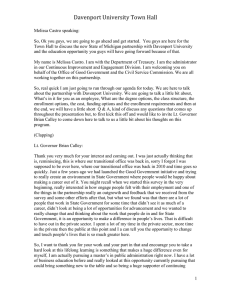Consolidating Multi-Source and Multi-Media Knowledge
advertisement
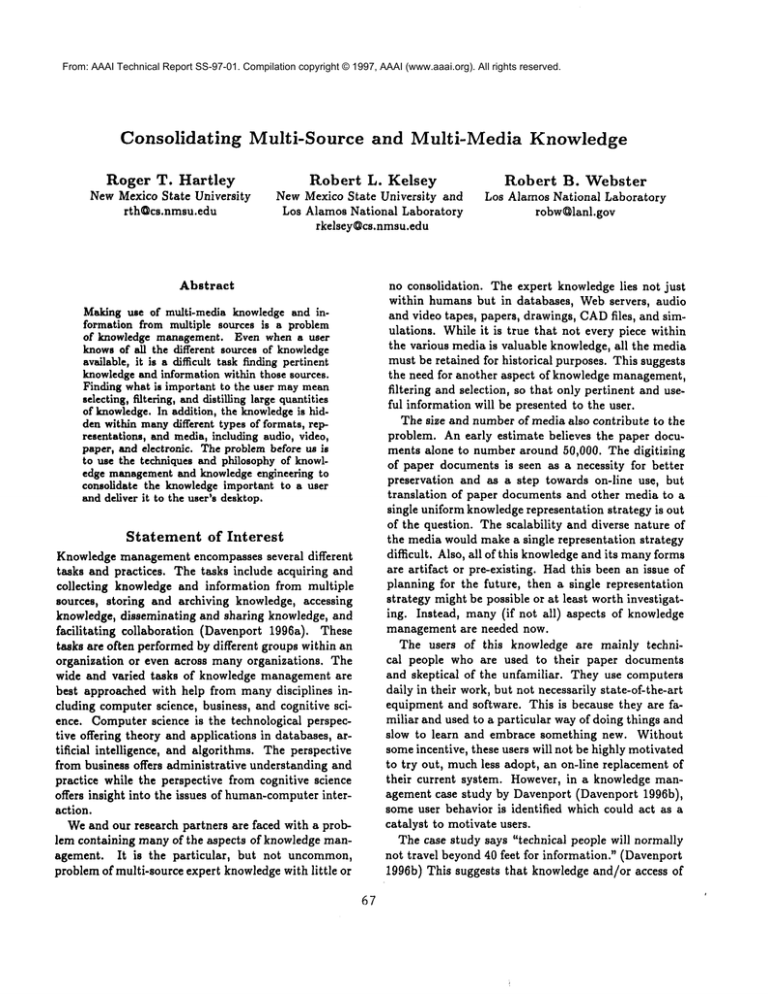
From: AAAI Technical Report SS-97-01. Compilation copyright © 1997, AAAI (www.aaai.org). All rights reserved. Consolidating Multi-Source Roger T. Hartley NewMexico State University rthQcs.nmsu.edu Robert and Multi-Media L. Kelsey NewMexico State University and Los Alamos National Laboratory rkelsey@cs.nmsu.edu Abstract Knowledge Robert B. Webster Los Alamos National Laboratory robw~lanl.gov no consolidation. The expert knowledge lies not just within humans but in databases, Webservers, audio and video tapes, papers, drawings, CADfiles, and simulations. While it is true that not every piece within the various media is valuable knowledge, all the media must be retained for historical purposes. This suggests the need for another aspect of knowledge management, filtering and selection, so that only pertinent and useful information will be presented to the user. The size and number of media also contribute to the problem. An early estimate believes the paper documents alone to number around 50,000. The digitizing of paper documents is seen as a necessity for better preservation and as a step towards on-line use, but translation of paper documents and other media to a single uniform knowledgerepresentation strategy is out of the question. The scalability and diverse nature of the media would make a single representation strategy difficult. Also, all of this knowledgeand its manyforms are artifact or pre-existing. Had this been an issue of planning for the future, then a single representation strategy mightbepossible or at leastworthinvestigating.Instead, many(ifnotall)aspectsof knowledge managementarc needednow. The usersof this knowledgeare mainlytechnical peoplewho are used to theirpaperdocuments andskeptical of theunfamiliar. Theyuse computers dailyintheirwork,butnotnecessarily state-of-the-art equipment andsoftware. Thisis becausetheyarefamiliar andusedto a particular wayof doingthings and slow to learnand embracesomethingnew. Without someincentive, theseuserswillnotbe highly motivated to tryout,muchlessadopt,an on-line replacement of theircurrentsystem.However,in a knowledge managementcasestudyby Davenport (Davenport 1996b), someuserbehavior is identified whichcouldactas a catalyst tomotivate users. Thecasestudysays"technical peoplewillnormally nottravel beyond40 feetforinformation." (Davenport 1996b)Thissuggests thatknowledge and/oraccessof Making use of multi-media knowledge and information from multiple sources is a problem of knowledge management. Even when a user knowsof all the different sources of knowledge available, it is a difficult task finding pertinent knowledgeand information within those sources. Finding what is important to the user maymean selecting, filtering, and distilling large quantities of knowledge.In addition, the knowledgeis hidden within manydifferent types of formats, representations, and media, including audio, video, paper, and electronic. The problem before us is to use the techniques and philosophy of knowledge managementand knowledge engineering to consolidate the knowledgeimportant to a user and deliver it to the user’s desktop. Statement of Interest Knowledge management encompasses several different tasks and practices. The tasks include acquiring and collecting knowledge and information from multiple sources, storing and archiving knowledge, accessing knowledge, disseminating and sharing knowledge, and facilitating collaboration (Davenport 1996a). These tasks are often performed by different groups within an organization or even across many organizations. The wide and varied tasks of knowledge management are best approached with help from many disciplines including computer science, business, and cognitive science. Computer science is the technological perspective offering theory and applications in databases, artificial intelligence, and algorithms. The perspective from business offers administrative understanding and practice while the perspective from cognitive science offers insight into the issues of human-computerinteraction. Weand our research partners are faced with a problem containing many of the aspects of knowledge management. It is the particular, but not uncommon, problem of multi-source expert knowledgewith little or 67 knowledge should be consolidated at the user’s desktop. Human-computerinteraction issues suggest that if a system is on-line, then it should still provide the user with familiar formats and tools. This is part of good user-interface design. Another factor from Davenport (Davenport 1996b) says users do not often know exactly what information they are looking for or trying to obtain. Better querying of information may be facilitated with intelligent agents or tools. In any case, the users of any system play an important role in the design of the system. Participation from users must be sought early and encouraged throughout the design and implementation stages. This project is still in its very early stages. Weare only beginning to understand the magnitude of the problem with it many parts and pieces. Webelieve this project can benefit from the philosophy and techniques of knowledgemanagementas well as gain insight from those who have investigated areas of knowledge management. Wealso believe that this project will contribute to areas of knowledge management. References Davenport, T. H. 1996a. Some principles of knowledge management. http://knowman.bus.utexas.edu/pubs/kmprin.htm. Davenport, T. H. 1996b. Teltech: The business knowledge management case study. http://knowman.bus.utexas.edu/pubs/telcase.htm. of
